
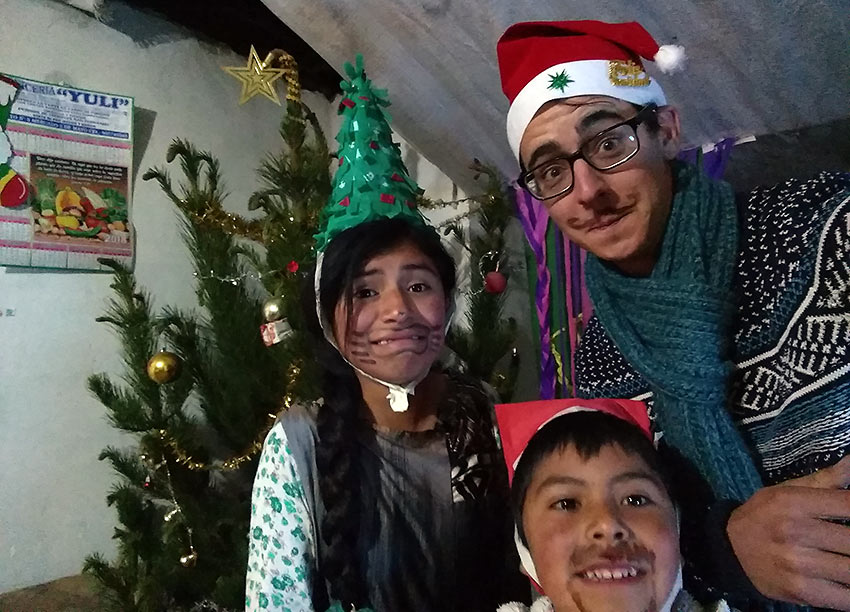
Editor’s Note: This article was written in broad brushstrokes; a generalization of Holiday Traditions that may vary inside the given nation. — EB
America: Colonial U.S.
In Colonial America, Christmas was essentially a day of spiritual observance. Carols were sung and church bells rang out to celebrate the commemoration of Christ’s birth. Early Americans decorated evergreen trees with things from nature and homemade items. Christmas was a warm, family experience for Colonial America. It blended the experience of a new land with the customs from a European Heritage. The Puritans did not celebrate Christmas, and it took awhile for the Catholic Mass of Christ tradition to become popular with a primarily Protestant population.
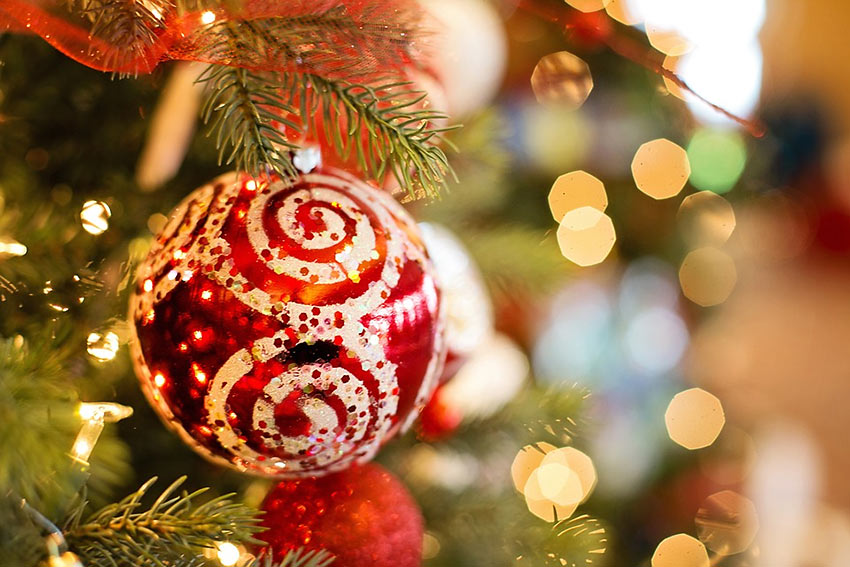
America: USA
Like Protestant Colonial America, Christmas never really caught on until roughly 1840. Due to the influx of Catholic immigrants, who brought many customs from other countries, celebrating Christmas became more widespread. Finally, Christmas was declared a Federal U.S. holiday on December 25 in 1870. Since then Christmas Day has become a steadily more important holiday.
America: Native AmerIndians
The Amer-Indian Christmas tree was inspired by the teepees of the plains Indians. Many years ago, the plains Indians celebrated the solstice with lights and feasting. Today the Christmas tree is topped with a handmade ornament called the ‘Eye of God.’ Each tree is trimmed by the children, who draw on nature for their designs. Animal hides lay under the decorated trees, where foods, cooking pots and pieces of Indian art are arranged.
America: Alaska
Most of the customs in Alaska are similar to other parts of the USA. Some Alaskan children can even look out of their houses and actually see reindeer. Alaskan people enjoy having Christmas parades. Often, a large star is carried at the head of the procession. The people follow and sing songs that remind them of the Star of Bethlehem that first Christmas. During the holiday season, Alaskans often get together with their families to watch dog sled races. Sometimes streets in the cities are blocked off so that these races can take place right in the middle of town.
America: Hawaii
Hawaii’s Christmas traditions are much the same as the rest of the states, but with a unique Polynesian mix. Homes are decorated with greenery and native Hawaiian flowers. Christmas trees are present in numerous homes. Many families enjoy their Christmas meals at the beach. Sea foods and fresh fruits are popular foods, and you will often find pigs being roasted in underground pits as in a Luau. Children believe Santa comes to them riding on a surfboard or in an outrigger canoe.
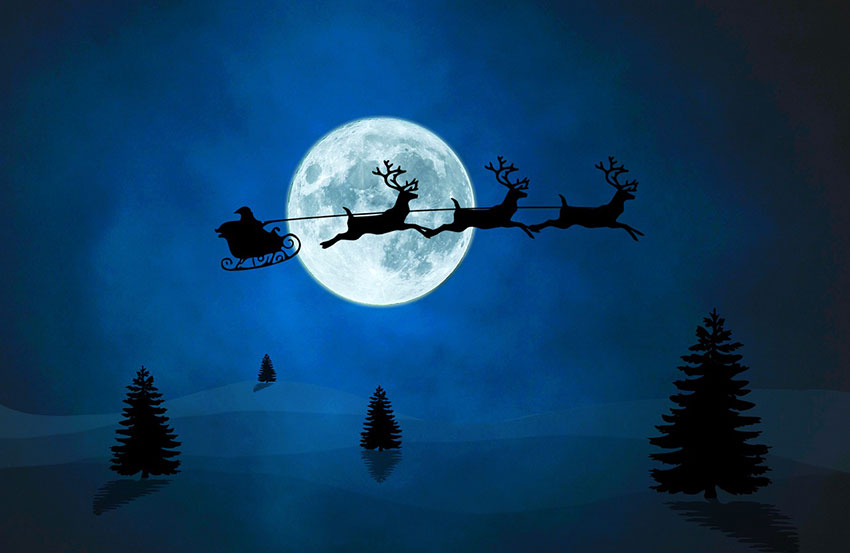
America: Canada
Christmas is celebrated in many ways throughout the country. The children believe Santa Claus comes from the North Pole in a sleigh to deliver his gifts. French-Canadians have a very religious Christmas, where Christmas Eve is spent in church. After Church people go home to a family festival and dine on what is called Reveillon. Gifts are not usually exchanged until New Year’s. Anglo-Canadians and others Canadians celebrate Christmas in much the same way as we do in the U.S.
On January 6, a Kings of Epiphany feast is held, and a special cake is eaten with a pea and a bean baked into it. The people getting these prizes in their piece of cake are elected King and Queen of the 12th Night. This happy, joyous time ends the holiday season.
America: Mexico (Feliz Navidad)
Mexicans start their festivities on December 16. Each night for nine nights before Christmas, families go to each other’s homes for joyous parties or posadas. Each posada starts with a parade of all the guests. Leading the procession are people carrying small figures of the holy family and other nativity scene characters. The paradors go to a door of the host’s house and knock. The host calls out that there is no room in his house. The guests continue to sing and knock, and finally they are invited in. The holy figures are placed on an altar and the people pray and sing.
Soon the party drifts out onto the patio, where the high point is the breaking of the pinata, a large earthenware pot, usually decorated to look like a face, animal, or other appealing object. The pinata is suspended overhead by a rope, and blindfolded children strike at it with a large club. When it is broken, its contents shower to the ground and the children scramble quickly to gather its treasures. These usually include fruits, small toys, candy and games. On Christmas Eve, the largest posada of all is held. There are fireworks and noisemakers. At midnight, the people go to church. After church, a large feast is held. Sometimes gifts are exchanged, but children often wait until King’s Day (Jan 6) to receive gifts. The night before King’s Day, the children have been busy filling their shoes with hay. During the night, the children believe the kings will pass on their way to Bethlehem and the hay is for their horses. In the morning, the hay is gone, and small toys and candy will be found in the shoes.
Africa
Africa is widely varied as to the customs followed by the people. Natives do not celebrate Christmas unless they have been influenced by others who have introduced them to this holiday. Many cities were developed by European countries as colony settlements, and immigrants arrived with Christmas customs from their homelands. Activities are generally held out of doors.
Carolers gather around nativity scenes, and dinner may be served out in the yard. The Christmas tree is a decorated banana or coconut tree. Tribes have festive dances around big bonfires. On Christmas Eve children hang stockings or leave shoes for St. Nicholas to fill. Children may only get one, small homemade toy, but they are thrilled to get it.
Africa: Ethiopia
In Ethiopia, children get up early to be at 4:00 am church services. Later, those who live in the capitol city of Addis Ababa, dressed in their best clothing and walked to the royal palace, where the Emperor endowed them with gifts. The last emperor of Ethiopia was overthrown about 20 years ago, so the custom of waiting for gifts from him is no longer valid.
Africa: Cape Town
Cape Town has the advantage of some wonderful beaches, and Christmas falls in mid-summer, so that’s where a lot of the fun happens. Interestingly enough all their Christmas Cards show snow, fir trees, robins and other Eurocentric things. If they want holly, painted berries are used because they’re still green.
Most families get together at home, on the beach or at a restaurant for a cold lunch. Another major Cape Town holiday is “Tweede Nuwe Jaar”, Second New Year, which is traditionally the day the whole city goes to the beach. There’s also the Coon Carnival, where community groups dress up in colorful costumes and play typical Cape Music – banjos, squash boxes and tambourines making up a large part of it. The competition for best band is quite tense.
Of course, Cape Town is a major holiday destination for the Transvaal, where most of the population of SA lives in large mining cities. The best part of Cape Town’s Christmas season is when the Vaalies go back to school.
South America: Brazil
In Brazil, Christmas arrives at the beginning of summer. There is no snow, cold, or need to bundle up, but in spite of the heat. Santa Claus is known as “Papai Noel” and wears the traditional costume as seen in countries where it is winter. The celebration runs from December 25th to January 6th (Three Kings’ Day), lasting 12 days. Many Brazilians attend Mass on Christmas Eve, where the Christmas story is retold. One week later on New Year’s Eve (or Reveillon), many people will flock to Copacabana beach and participate in an African spiritualist ceremony that honors “Lemanja”, the goddess of the sea. Then on Epiphany or Three Kings’ Day, children put their shoes beside the window or outside the door, hoping to find them filled with treats the next day, supposedly by the three wise men. This officially ends the Christmas season.
South America: Columbia
This South American country’s Christmas customs center around country homes in the beautiful Andes Mountains. It’s a time to eat and enjoy folk music played on the traditional instrument, called the Bambucas. Christmas trees are decorated with coffee beans, berries, bacon, and bright ribbons. In some sections of Columbia, a huge balloon is fashioned from thin colored paper to complement the Christmas tree and raise the spirits of the people. The Columbian Christmas celebration begins December 15th and lasts through Jan 6th.
Asia: India
Christmas is not celebrated in many areas of India, but because of the influence of missionaries and influx of the British who once ruled the nation, the holiday has become more popular. In these areas, shops, churches and homes will be brightly decorated with native greenery and flowers. Nativity scenes appear, and Christmas carols are heard. Evergreen trees are not common to may parts of India, and often you will see banana or coconut trees decorated instead. Christmas Day is a time for visits with friends and relatives, as well as for playing games.
Christian families attend church on Christmas Eve and Christmas Day. Toys and decorations are often handmade and depending on the area you are in dinner might be a formal feast with roasted fowl, and all the trimmings, or a simple meal of rice eaten outside under a tree.
Asia: Japan
Japan is not a predominantly Christian country, but Christmas has become a secular holiday that many Japanese people enjoy. Homes are decorated with evergreens, special meals are prepared, and Christmas songs sung. Santa, called Hoteisho, may visit some of the homes. Children believe that he has eyes on the back of his head so he can see all the good and bad things they do. More than Christmas, Japanese children look forward to New Year’s Day. All the homes are cleaned and scrubbed, then decorated with evergreens, bamboo, or flowers. Special rice cakes are made. Everyone pays all their ills, so that they will not be starting the new year in debt. On New Year’s Eve, temple bells ring 108 times to show the old year is over and the new one is beginning. People put good luck poems under their pillows as they go to bed to bring good fortune in the coming year. On New Year’s Day everyone wears their finest clothes. Boys fly kites, girls play games, and people visit friends. Gifts are often exchanged at this time.
Denmark: Europe
Christmas is Denmark’s greatest festival of the year. The chiming of church bells signal the festivities. Traditional Danish celebration is an elaborate Christmas dinner in honor of the beloved Nisse, the Gnome of Christmas. The Danish Christmas tree takes a very unique look with stars, bells, costumed dolls and strings of tiny Danish flags, combining with pine cones and many colors of handmade paper ornaments. At dusk on Christmas Day, the family’s father usually reads from the Christmas gospel. As night falls, the family sings the songs of the season.
England: Europe
Most of the activities in England center around church celebrations. Christmas caroling and Christmas plays and stories are favorites of the holiday season. Christmas trees are very popular, however instead of cutting them down, people dig them up along with some soil, and keep them in a large tub. After Christmas is over, the trees will be replanted again. Yule logs are also widely used. A large log is brought into the home to be burned in the fireplace. Before it is lighted, family members sit on it and wish for good luck in the coming year. Two popular Christmas foods are wassail and plum pudding. Wassail is a hot spiced apple beverage. The plum pudding has a small coin or trinket in one of the servings, and the person finding it is supposed to have good luck in the future. Children hang up stockings on Christmas Eve, and during the night, Father Christmas, a kindly old man, fills them with candy, nuts, and toys. The English include the first weekday after Christmas in the season’s celebration, they call it Boxing Day. Sadly, during the period of the Protestant Reformation, it was illegal to celebrate Christmas, deemed a pagan Catholic holiday.
Estonia: Europe
The Christmas observance begins with the first evening star sighted on Christmas Eve. Tradition calls for Saint Nicholas, the kind and generous bishop, to place wheat cakes on the window sill. The cakes are eaten on Christmas day. The Christmas tree is adorned with handmade ornament balls, colorfully decorated eggs and candles. Christmas Eve supper is served on a table covered with straw, symbolizing the manger where the infant Jesus slept. Later, families dressed in native costumes, gather about their neighborhoods to sing Christmas carols.
Finland: Europe
Simplicity marks the decorations and the celebration of a Finnish Christmas. A balsa star tops the tree. The delicately made stars reflect the light of lamps or a bright fire in the fireplace, suggesting a starlit sky. Many tree decorations are edible. Straw is used to remind them of the manger. Christmas is a quiet day for the family in Finland. Dinner includes roast suckling pig, and the traditional rice pudding with an almond it is said that the legend of Santa Claus began in Finland. Finland is the country of his official residence.
France: Europe
In France most families enjoy two creches (Nativity Scene), The first is in their own church. The other is at home. Great care is taken in setting it up. Holly and greens are purchased for a backdrop. A lighted star is always suspended over the creche. The family gathers around and sings carols as the infant Jesus is placed in the manger. The three kings are place there on Epiphany Eve, (Jan 6).
A special cookie is baked. Some feel it must first be shared with needy people. In addition a ‘Cake of the Kings’ is used in the Jan 6th celebration. A bean is placed inside and the person finding it is given a crown and becomes king of the party. Christmas Eve is for gift giving, Shoes are left by the fire to be filled by Pere Noel. Birch sticks are sometimes left as a reminder to be good. Ashes from the Yule log are saved and used during the year to ward off sickness, or other misfortunes. At midnight, on Christmas Eve, the grownups attend a special Mass. Afterwards, a late supper is served to adults. The children go to bed early to dream of their Christmas miracle.
The top of a traditional French Christmas tree carries a star of angel, bells, handcrafted exotic birds, pine cones, plain globes and candles trim the tree. Often roses or other flowers and apples are added. French children place wooden shoes near the fireplace or under the tree. The shoes are filled with candies, oranges and chestnuts. Christmas presents are given on New Year’s Day.
Germany: Europe
The 11th of November is St. Martin’s Day. St. Martin who lived in the 4th century was first a knight soldier. Later he became a bishop. He was a kind man and especially good to the poor people. One day he even shared his coat with a beggar, literally splitting it in half. Children carry lanterns in parades to praise him and also to bring light to the cold winter nights. A traditional dish to eat on St. Martin’s Tag is the goose. It is told that geese once saved St. Martin’s life.
The advent season includes the 4 consecutive Sundays before Christmas. This is when the children get ready for the arrival of the ‘Christkind’ or the ‘Weihnachtsman’, who will bring gifts on Christmas. An ‘Adventskranz’ is a wreath made of evergreen boughs held together with red ribbons. It has 4 red candles attached to it. The wreath is hung from the ceiling or put on a table.
Traditionally, one candle is lit the 1st advent Sunday and one additional candle for each of the following Sundays before Christmas. The advent wreath with no beginning and no end symbolizes eternity, as do the evergreen branches that it is made of. German children also keep an ‘Adventskalender’. Usually it shows a market square at Christmas time. Every day during the season the children open one of the 24 little windows that can be found in the picture, until all 24 windows are opened on Christmas Eve.
St. Nikolaus Tag falls on 6 December, and St Nikolaus will come and visit the children on the evening of the 5th. He looks very much like Santa Claus, and sometimes he is dressed like a bishop. He tries to find the good children and give them nice gifts. He also carries switches for the bad ones. Children often put their shoes out on the 5th in case he comes while they are sleeping, and in the morning they find goodies or switches in them. Many years ago Sunnerklas (Santa) also came on the 6th, but in modern times he has been coming on Christmas Eve.
Greece: Europe
The Greek tree is without lights. Decorations are taken from nature or are homemade. Nuts and garlanded berries, olive branch circles, and holy pictures trim the tree. A cardboard star sits on top. Freshly sheered lamb’s wool drapes around the tree to represent a winter’s snow. A homemade stable (Nativity Scene) with the infant Jesus, Mary and Joseph plays an important part in the celebration.
Italy: Europe
Rome is the birthplace of the Christmas (Mass of Christ) celebration, stemming from the ancient solstice holiday of Saturnalia. Virtually all traditional Christmas events arrived from Saturnalia, with the exception of a live Nativity Scene, attributed to St. Francis of Assisi. Now, days before Christmas, the children of Italy go door to door singing favorite Christmas carols. They are often accompanied by pipers wearing bright red jackets and broad-brimmed hats with red tassels. They carry bagpipes, flutes and oboes, on which they play sweet holiday music.
Often the children and pipers are invited into homes to sing old carols and folk songs. On Christmas Eve, many candles are lit as the children in the family take turns telling the wonderful story of Christmas and the birth of the holy “Bambino.” At this time, Italian families gather around their beloved “Presepio,” a shrine to the Holy Child, and pray. On the day of Christmas, all members of the family sit down to a feast of ravioli, tortellini al brodo or lasagna, varying on the region. On the 12th day of the holidays (Jan 6) a kindly old witch known as “La Befana” brings gifts to the children. Legend has it that when Christ was born, the shepherds told La Befana of the wondrous happenings and the guiding star, but she delayed setting out. Every Christmas since, she wanders in search of the Holy Child, leaving gifts at each home in hope of finding him inside. La Bafana is often shown as being old and ugly, but the children of Italy love her very much. That is unless they have been naughty, for then their shoes will be filled with coal and ashes instead of candy and gifts.
The Netherlands: Europe
The Netherlands: (‘Gelukkig Kerstfeest’; ‘Zalig Kerstfeest’) December 5th is called “Sinterklaas’ Avond” (St. Nicholas Eve). The children believe Sinterklaas sails into Holland on a big ship with his great white horse and his helper, Zwarte Piet (“Black Pete”: Slavery – Black Pete: history of the character (weebly.com). He has come to deliver gifts to the good children. The children who have been misbehaving just might get a switch or a lump of coal. On St. Nicholas Eve, families gather to enjoy a family feast and to listen to the story of how St. Nicholas became a legend. The first St. Nicholas was a bishop who lived in Spain in the 13th or 14th Century. He was a very kind man, and people like to tell how he helped the poor people.
He especially loved children, and enjoyed giving them gifts on his birthday (Dec. 6th). Later, the Dutch people made St. Nicholas their patron saint. Before going to bed, Dutch children fill their shoes with hay and carrots for the big white horse. The shoes are set by the fireplace or the stove. In the morning, the food is gone and the shoes are filled with candy and toys.
Although Sinterklaas and Santa Claus have almost the same name, the one has nothing to do with the other. A few days before Christmas the Dutch decorate their Christmas-tree with candles and other ornaments. Christmas music is played and on Christmas Eve there are celebrations in the churches. Many Dutch families choose to give their children (and each other) presents at Sinterklaas, but not on Christmas Day. This is slowly changing in favor of Christmas Day. Presents are brought at night by the ‘Kerstman’ (Santa Claus) in a sledge with reindeer. Santa hangs the presents in the tree or puts them under the tree. Despite the Dutch Reformed Church as the Netherlands’ state religion, they ignored Northern Europe’s Protestant disdain of the Catholic holiday, and kept it alive, spreading it across the northern continent.
Norway: Europe
Norwegian church bells signal the beginning of Christmas at 4 P.M. Christmas eve. They call everyone to church. At home, fragile handmade ornaments in the shape of stars and circles adorn the Christmas tree. Norwegian flags are joined by string to encircle the tree. Often, cookies and other pastries in elaborate shapes are used as ornaments. A Norwegian family Christmas focuses on the tree, where presents are distributed to the children on Christmas Eve.
Poland: Europe
Garlands formed from paper chain links decorate a Polish Christmas tree. Handmade ornaments, elaborate swans made from egg shells, brightly colored birds, fish, shields and patriotic emblems, lend their individual form to the decoration. Straw is commonly used for decorating. It reminds the people that the Christ Child was born in a simple manger. To further recall the newborn Savior, the family leaves an empty chair for him.
Russia: Europe
The former Soviet Union did not approve of people celebrating Christmas or other religious holidays. Older Russian people, however, celebrated Christmas quietly in their own homes. Many years ago, the Russian children used to expect St. Nicholas to visit them on Dec. 6th. They believed he came down from heaven with two helpers – an angel, with gifts for the good people, and a devilish character, who brought switches for misbehavers. In some parts of the country, “Baboushka” (Grandmother) would bring the gifts instead. The homes were decorated with Christmas trees and Nativity scenes. For forty days before Christmas, the people would fast.
Today in the Russia Federation, many families put up a decorated tree for Christmas and exchange gifts A mysterious character known as Father (or Grandfather) Frost might leave surprise packages on Christmas or New Year’s Eve while the family is fast asleep.
Scotland: Europe
The Christmas Tree is a relatively new custom in Scotland. The first trees were decorated in a variety of ways, religious Christmas cards, tinsel garlands, paper chains, mesh bags of candy, colored bells, pull snappers. A tree was usually topped with a Christmas fairy. Some trees became home for a Christmas mouse. Unfortunately, since the end of World War II, the Scottish tree has become more standardized.
Spain: Europe
Christmas season begins on Christmas Eve and lasts until King’s Day on January 6th. Many families set up a ‘nacimiento’ with small figures of Mary, Joseph, Baby Jesus, & other manger characters. During the holidays, it will be the center for prayers, singing hymns and festive dancing. Christmas Eve day is spent in religious devotion in some families. Others enjoy spending the time at the gaily decorated market places which are piled high with fruits, candy, fancy foods and other colorful items. At midnight, the church bells ring and everyone goes to church to celebrate the birth of Christ. Christmas Day is spent attending more church services and in a huge family feast. Children do not usually decorate trees or hang up stockings. Instead, they wait until the night before King’s Day, and they fill their shoes with carrots and hay and put them on the windowsill. During the night, they believe the 3 Kings will ride by. The carrots and hay are for their tired camels. The 3 Kings will fill the shoes with candy and small gifts.
Sweden: Europe
The Christmas season begins at dawn on 13 December in Sweden. A girl from each household, usually the oldest daughter, dresses in a long, white robe with a red sash. On her head is a halo of lighted candles and evergreen boughs. She moves from room to room singing and serving a breakfast of coffee and cakes to each member of the family. This girl is called St. Lucia. She reminds the Swedish people of a brave, kind-hearted girl named Lucia who lived a long time ago. Lucia was a girl of the Roman Empire who was martyred for giving money and help to early Christians. The candles on Lucia’s head are a symbol that the light of the sun will soon return to Sweden. Because this country is located so far north, days are dark and cold for may weeks before St. Lucia Day and the people are anxious for spring to arrive.
The Swedish people spend many busy weeks before Christmas scrubbing their homes and making special Christmas foods. Late in the afternoon of Christmas Eve Day, they go to church. After church, they hurry home for a huge Christmas feast. Birds and animals are especially remembered during this time. The animals receive an extra portion of their favorite food, and a sheaf of grain is tied in the yard for the birds to feast on. After the Christmas Eve meal, the family sits around their Christmas tree to sing carols and exchange gifts. Each gift comes with a poem written by the sender. Before the gift can be opened, the poem must be read for everyone to hear. Before going to bed, the children often set a bowl of porridge out for the Jultomten (Yule Man), a little elf whom they believe takes care of farm animals and watches over the home. Jultomten may even visit the family while they are awake, arriving in a sleigh pulled by a Christmas goat.
Ukraine: Euopre
Needlework in the form of small pin-cushion-like pillows, ceramic drops decorated in traditional cross-stitched patterns, and real apples, decorated the Ukrainian Christmas tree. Nuts, candles and small wreaths hang from the tree branches. Sometimes thread cobwebs cover the spaces between the boughs. The Ukrainian Christmas always symbolizes health and wealth. The traditional colors of black and red are used in decorating.
Israel: Jewish Traditions (Hanukkah)
Jewish children have a December holiday know as Hanukkah. The word ‘Hanukkah’ means dedication. Many years ago, (165 B.C.) enemies of the Jewish people had taken over their temple at Jerusalem. Finally, a small, brave group of Jews known as the Maccabees battled the enemy and won back the building. Then the Jews held a dedication service to their God. They wanted to keep a large Menorah burning, but they only had enough oil to last one day. By some great miracle the lamp kept burning for eight days. Hanukkah still lasts eight days. Each night the families get together in their homes to light the Menorah, One candle is lit the first night, with an additional candle lit each additional night. “Rock of Ages” (Maoz Tzur in Hebrew), a hymn of praise to God, is sung after each night’s lighting of the candles Today, in the United States especially, it has become customary to use an electric Hanukkah menorah (known as a Hanukkiyah), which is placed in the front window for all to see.
No work is to be done by the light of the Menorah, so the families have fun together playing games, singing songs and exchanging gifts. A favorite traditional activity for the children is a game using a square top called a dreidel. The Jewish symbols on the top say “A Great Miracle happened Here,” in remembrance of the oil that kept burning.
The celebration of Hanukkah in Jewish homes outside Israel (at least among the Askenazic Jews) is the same as described for Israel. I don’t know details of the Sephardic celebration. (Ashkenazic are those Jews from roughly Germany; in short, most northern European. Sephardic are the Jews descended from the Jews expelled from Spain in 1492; many ended up in north Africa, Romania, Turkey, and the Middle East).
The legend of the miracle oil did not surface until over 100 years after the dedication (December 10, 165 BC, based on the current calendar algorithm). The probable reason for the 8 day celebration was that the Maccabees hadn’t had time to celebrate the harvest festival of Sukkot earlier in the year, an 8 day holiday.
Also, due to possible non-maintenance of the calendar (adding an extra month 7 times in 19 years to keep the months aligned with the seasons) because of the Jew banning policies of the Syrian Greeks, the dedication may have really taken place on October 11, 165 BC, just after Sukkot (Oct 1 through Oct 8 that year). Menorah: seven-branched candelabrum described in the bible and used in Temple days. Today it is the official emblem of Israel. Most synagogues utilize a Menorah as part of the decor in the sanctuary. The special Menorah for Hanukkah has eight candlesticks and a ninth for the shammmash (server).To distinguish the two, the latter is called a Hanukkiyah.
Israel: Non Jewish Traditions
While Jews around the world do not celebrate Christmas, there are Christmas celebrations in Israel. The Latin Patriarch of Jerusalem leads a procession to Manger Square in Bethlehem, arriving around midnight, where he leads a special Christmas mass. Outside, in the Square, there are several, often incongruous, things going on.
Arab boys sell chestnuts they have roasted over Sterno. There is a final competition in caroling. The weather is often cold with a stiff wind, yet women/girls wear short skirts, while men/boys wore clothes more appropriate to their home states.
Well, that’s what I have on Christmas and other year end holidays around the World, If anyone has additions or corrections, let me know.
Happy Holidays!
– Traveling Boy
Sources Consulted for Article:
International Christmas (c) 1974 Trend enterprises, Inc.
Christmas Around the World by John D. Green, who spent time interviewing delegates to the United Nations and visiting foreign consultants in New York City.
Dictionary of the Jewish Religion by Dr. Ben Isaacson (c) 1979 by Bantam Books, Inc.
Christmas Around the World from World Book Series: Christmas in the Holy Land (c) 1987, Christmas in Brazil (c) 1991, Christmas in Russia (c) 1992.
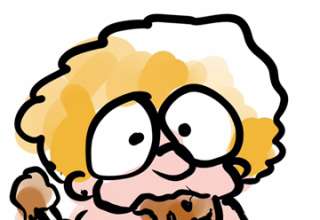

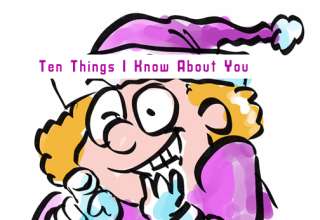



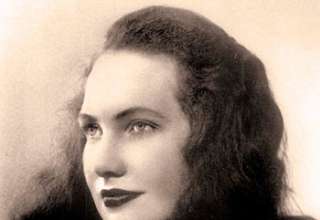
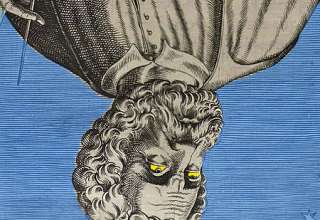
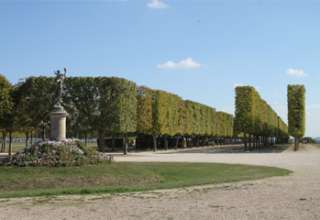
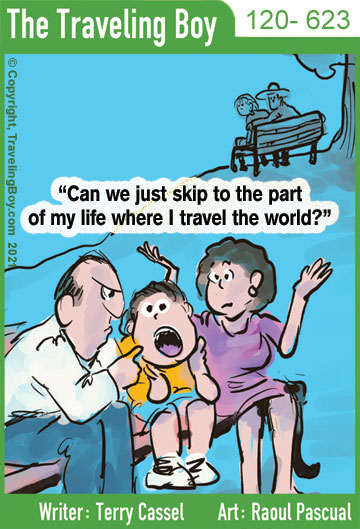














Peggy Polinsky
December 17, 2018 at 2:24 pm
Hi Andrew – I appreciate your descriptions of Christmas around the world. Just one note: Many Americans: USA do not have fireplaces. We hang our stockings wherever we can. We use stocking hangers to hand ours from a bookcase. In this season, anything is possible! Let’s try for Peace on Earth!
Thanks again and Happy Holidays!!